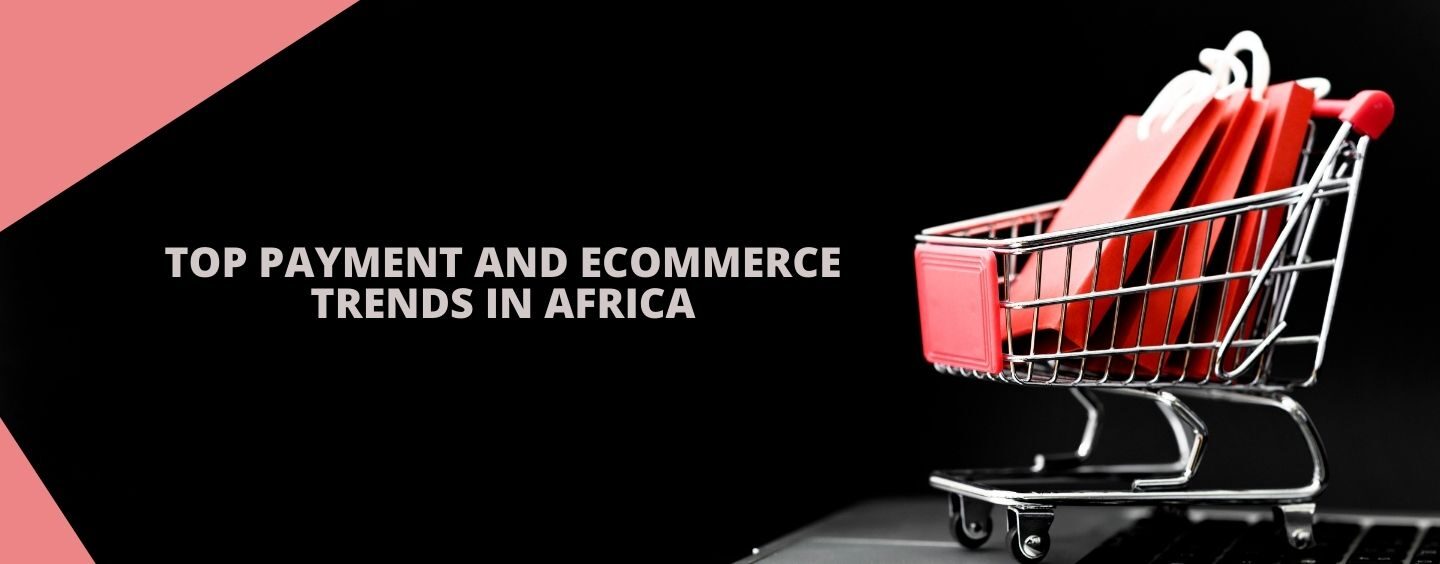Although there is vast potential for ecommerce in Africa just by sheer market size, the ecommerce sector is currently concentrated in a handful of markets.
According to an ITC report, a total of 78% of all online business in Africa comes from just 5 African countries – South Africa, Egypt, Nigeria, Algeria, and Kenya. Typically, larger and more active platforms are accessible only in bigger economies in Africa, while just three international marketplaces are open to sellers from 50+ African countries.
As of 2019, the continent’s 631 online marketplaces saw 2.2 billion visits. This is relatively smaller on the global scale. For instance, Amazon recorded about 2.6 million global visits on average in H1 this year.
The pace is picking, however. Ecommerce revenue in Africa is expected to double between 2021 and 2025, reaching an estimated US$46.1 billion by the end of this period. In this backdrop, here are some top payments trends that are likely to play into the growth of ecommerce in Africa.
Mobile money dominates the payments landscape
Mobile money is the clear winner in the payments sector in Africa right now, and part of the answer to unlocking the potential of ecommerce growth in the continent. Sub-Saharan Africa has seen mobile money accounts grow 11 times in the past decade, and the region is home to more than half of the world’s 310 live mobile money services.
All of this is despite a relatively low internet and mobile penetration in the continent. Internet penetration stands at just 36%, and mobile services have a penetration rate of 45%.
While the African continent is still largely underserved by banking services, mobile money players have stepped in to plug the gap. These players come from widely different enterprise backgrounds, including giants such as Safaricom M-Pesa, Airtel Money or MTN Mobile Money, innovation-focused companies such as Flutterwave, or newer startups such as OPay or Wave.
Having a robust payment infrastructure in place is essential to ecommerce readiness. Yet, the ITC report notes that just about a third of marketplaces in Africa offer online payments.

Source: Pexels
In this fragmented payments ecosystem, where the number of bank accounts and trust in financial institutions both run low, a mobile money system that’s seeing growing adoption becomes a vital in-road to driving ecommerce growth in the continent. For instance, in Ghana, mobile money drove 61% of ecommerce sales in 2018. The next most popular payment method, locally issued cards, captured just 15% of the market.
Tokenisation has found adopters in Africa
Tokenisation has seen offshoots in the African landscape. As a security mechanism, it works by digitising sensitive personal financial data and is especially useful in ecommerce transactions.
By replacing primary account numbers with an algorithmically-generated token that can be saved to customer or seller accounts, the process helps to protect the identity of users while helping to build a network of returning customers. Particularly due to its advantages during card-on-file transactions and one-click checkouts, tokenisation provides a valuable use case in building seamless payment and checkout experiences for customers.
It’s still early days for tokenisation in Africa, but adoption has taken off in Egypt, Nigeria, South Africa, and Morocco, according to Ramy Fouda, Director Of Sales And Business Development, MEA at Netcetera.
Superapps make their presence felt
Superapps have seen resounding success mainly in East and Southeast Asia, but the trend has begun to pick up elsewhere, and Africa is no exception.
From Gozem and MNT-Halan, to Jumia and even M-Pesa and VodaPay, superapp offerings across the African continent are on the rise.
In South Africa, integrations with VodaPay’s “mini programs” (similar to WeChat’s offerings by the same name) have seen an early uptick. Gozem has seen 2.5 million transactions and 500,000 users on the platform since its launch about two years ago, with annual gross merchandise volume running into “several million dollars.”
The USP of superapps is that they give consumers a one-stop ecommerce destination with multiple functionalities, as well as an end-to-end customer experience. Payments infrastructure is very much part of this journey. An interesting example of this is OPay. The fintech startup, which raised US$400 million from SoftBank’s Vision Fund 2 this year, is owned by superapp aspirant Opera, and backed by Chinese superapp Meituan.
Superapps are ultimately a representation of the deeper connections between a vibrant ecommerce system, and the foundational payments technologies that enable it in emerging economies.
Merchants must account for infrastructural challenges
As the ecommerce market gains traction in Africa, merchants need to rethink their infrastructural needs.
Payment facilitators have gained precedence in the ecommerce value chain over the past five years, by allowing access to digital payment platforms, according to a Visa report. Not only do they act as an ecommerce acquiring facility for merchants, but also provide customers with multiple payment options for convenience.
Meanwhile, in the shift from cash to cashless, the risk of fraud gains more relevance. For instance, fraud represented less than 1% of card-not-present transactions in Sub-Saharan Africa last year. However, half of these were linked to ecommerce. Meanwhile, cross-border payments have regularly resulted in unnecessary declines.
Merchants will need to ensure that consumers can use multiple payment instruments and currency options, and also access multiple channels, such as online gateways or mPOS. They will also need to put reliable fraud controls in place, as this has a direct impact on customer trust. Not only should they be looking at how well these fraud technologies are built and integrated, but should also consider adding two or more layers of cyber-protection to secure transactions.
Featured image: edited from Freepik







No Comments so far
Jump into a conversationNo Comments Yet!
You can be the one to start a conversation.